#brake mold factory
Explore tagged Tumblr posts
Text
À quoi ressemble la boîte d'emballage du moule de plaquette de frein d'exportation ? fournisseur de porcelaine de moule de plaquette de frein
JINAN HAIGUANG MOLDE CO., LTD https://brake-mold.cn
WeChat/WhatsApp: +86 13953117306
À quoi ressemble la boîte d'emballage du moule de plaquette de frein d'exportation ? (1) Il s'agit d'un moule pour plaquettes de frein à disque. (2) Selon les exigences douanières, la boîte d'emballage est un matériau d'emballage sans vapeur. (3) Mettez un moule de plaquette de frein dans chaque boîte (4) Tous les moules de plaquettes de frein nécessitent des boîtes d'emballage sans vapeur
(5) Ces moules pour plaquettes de frein comprennent : un moule pour plaquettes de frein à disque, un moule pour garnitures de frein, un moule pour plaquettes de frein pour bus, un moule pour mâchoires de frein de train, un moule pour plaquettes de frein pour rail à grande vitesse, etc.
moule de sabot de frein contre doublure, C130 production line mold https://brake-mold.cn/9194.htmlmoule de matériau de friction dans la douche, porte de moule de sabot de frein, moule de sabot de frein noir, moule de garniture de frein contre moisissure, moule de frein, usine de moule de frein Chine, nettoyant de moule de garniture de frein, moule de sabot de frein 3222e2657, usine de moules de frein bon marché , moule de frein zr1, BT production line hot press mold https://brake-mold.cn/9190.htmlmoule de frein ferroviaire runescape, moule de garniture de frein jb soudure, garniture de frein moulée, utilisation de moule de matériau de friction, plaquette de moule de plaquette de frein pour matériel roulant, pourcentage de moule de garniture de frein, moule et pont de plaquette de frein pour matériel roulant, fileur de moule de matériau de friction, Moule de frein, fabricant de moules de frein Chine, modèle de moule de sabot de frein, Multi-cavity mold https://brake-mold.cn/9167.htmlle moule de garniture de frein vous tue, moule de sabot de frein 040-363, bombe de moule de sabot de frein, partie du corps de moule en matériau de friction, entraînement de moule de frein, étiquette de moule de matériau de friction, moto de moule de sabot de frein , Usine de moule de frein au prix le plus bas, coiffure de moule de garniture de frein, moule de chaussure de frein peint vs taché, joint de moule de garniture de frein, moule de chaussure de frein, module de moule de frein ferroviaire, moule de garniture de frein nissan altima, odeur de moule de matériau de friction, lumière de moule de garniture de frein e30, Compilation de moules de frein ferroviaire, moule de garniture de frein de friction, moule de garniture de frein 4515, emplacement du moule de garniture de frein Witcher 3
0 notes
Text

2008 Ferrari F430 Spider
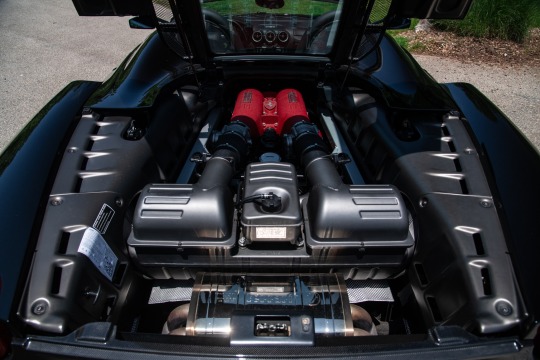
2008 Ferrari F430 Spider
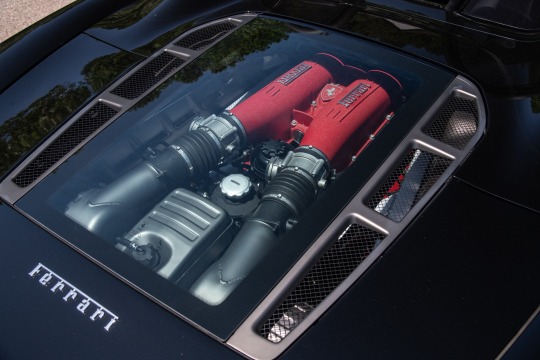
2008 Ferrari F430 Spider
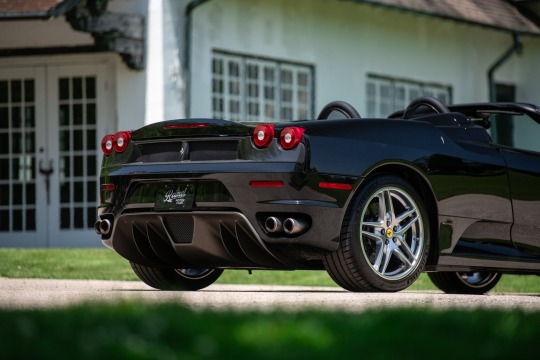
2008 Ferrari F430 Spider

2008 Ferrari F430 Spider
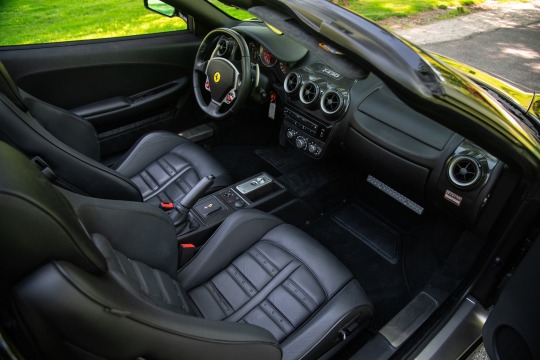
2008 Ferrari F430 Spider

2008 Ferrari F430 Spider
2008 Ferrari F430 Spider with only 9,000 miles on it. The car features a beautiful Nero exterior paint, a Nero leather interior, and a Nero soft top.
This F430 comes equipped with carbon-ceramic brakes, Daytona-style electric seats, carbon fiber rear molding, Scuderia shields, and ball-polished wheels, to name a few of the options. The car is equipped with a Clarion flip-up navigation, and the factory stereo comes with the car.
We have just completed the comprehensive annual service, which included oil, brake fluid, and coolant replacement, installation of a new accessory belt and pollen filter, and fitting of four new tires. This thorough service was performed by Scuderia Performante, a highly-regarded service center for Ferrari and Maserati.
This F430 is now live on Bring a Trailer Link below. @bringatrailer
https://bringatrailer.com/.../2008-ferrari-f430-spider-36/
17 notes
·
View notes
Text
How do you process carbon fiber brake discs?#carbonfiber #brakedisc #cncmachine #cncmachining #cnc #machine #cncmachinist #cncmillingmachine #cncrouter #cncporn #cncmill #cncmilling #cncplasma #cnclathe #cnccutting #cnclaser #cnctools #machinist #tools #cncprogramming #mold #components #machinetools #jinsucnc #5axis #cncoperator #factory #machining #fyp
#cnc milling#cncmachine#cncmachine tools#cncmachining#cncmill#cncrouter#cnctool#machine#cnc lathe#tool
5 notes
·
View notes
Text
A Leading Manufacturers of MG Car Parts in China
Key Players in the Manufacturing Process
Several important players are involved in making MG car parts that ensure any unit that goes into the vehicle’s manufacturing will stand up to the essential quality and performance. They are the companies that make everything from engine parts, chassis parts, and suspension, to all kinds of other components. Chinese Auto Parts comes into play, offering quality auto parts for multiple models of MG cars, including the MG3, MG5, MG6, MG ZS, and MG HS. Chineseautopart takes special care of every little detail of an MG vehicle because they offer as many as 100,000 kinds of motor parts.
Collaboration with Original Equipment Manufacturers (OEMs)
Partnering with Original Equipment Manufacturers, or OEMs is key to sustaining the fit and function of MGs.Chineseautopart manufactures the parts as per the original specs laid out by MG. This partnership guarantees that replacement parts fit and work seamlessly without impairing the vehicle system. Partnering with trusted manufacturers-allows OEMs to ensure that every part meets the OEM standards of safety, reliability, and efficiency.
Overview of Chineseautopart
Chineseautopartis a leading auto parts solution provider for Chinese car brands (such as MG). Chineseautopart is a factory store and wholesaler/exporter of auto parts, so it’s sure to have nearly all parts used for your vehicle, from engine parts to auto body parts. Chineseautopart covers the entire range of car parts from engine parts to body panels and has positioned itself as not just a factory store, but also a wholesaler and exporter. Take Chineseautoparts broad-and-building product mix that runs the gamut from filters; belts; engine mounts; chassis components; suspension; sensors; timing kits; gearboxes; clutches; bearings; ignition; rack and pinion; brakes &you name it, and we have it all,
Types of MG Parts Offered by Chineseautopart
Reliable Framework Components
Material Selection and Durability
Chineseautopart takes pride in the quality of the material they use for our framework components. These components have to stand the test of time because their strength dictates the safety and longevity of MG cars. Chineseautopart employs sturdy materials that allow the components of the framework to be resistant to multiple environments and driving pressures, giving MG owners confidence.
Engineering Precision and Design
Chineseautopart's framework components are designed and precision-engineered to the highest standards. Every component is bespoke to the blueprint specs needed for MGs. This level of accuracy allows it to integrate seamlessly within existing vehicle systems, improving vehicle performance and reliability overall. Chineseautopart brings commitment to excellence in design which translates into parts that not only fit but also optimize the structural integrity of the Vehicle.
Variety of Trim Pieces
Customization Options Available
MG owners have the opportunity to customize their MG, thanks to the massive banquet of trim pieces Chineseautopart has on offer. These customization options allow for refinements both inside and outside of the car. With everything from chrome finishes to colorful accents, Chineseautopart offers options for every taste so that no matter which MG you drive, you can get it to match your style.
Aesthetic Enhancements for MG Models
Aside from the personalization aspect, Chineseautopart's trim components also act as visual upgrade packages for MG vehicles. These components are made to stay along with the original design of the car but with a certain classiness and elegance. Chineseautopart has really gone above board when it comes to the design of any trim piece, for example, it could be a dashboard upgrade or a shiny molding but Chineseautopart makes sure that no matter what, each contributes to a high-end aesthetic overall at a functional level.
Ensuring Optimal Performance
The precision-composed link parts by Chineseautopart make sure to have performance in every area of vehicle dynamics. Whether it's steering responsiveness or suspension stability, these factors are integral to improving driving comfort and safety. The commitment of Chineseautopart to maintain a high level of quality means that every single link part is the contributing factor to a better driving experience.
Premium Filters
Filtration Technology Used
Chineseautopart filters feature advanced filtration technology inclusive of range of filters for MG vehicles. This technology effectively traps contaminants and allows clean air to go in and fluid to flow through the engine system. Chineseautopart also sets a high standard in filter quality, which ensures wear on engine components is reduced and the life of the vehicle is increased.
Using premium filters greatly affects the performance of the vehicle. These filters help optimize the filtration which, in turn adds up to a better fuel economy and less emission. Through its Global Supply System, Chineseautopart offers world-class filtration solutions that focus on improving engine performance while also upholding commitment to the environment by reducing the carbon footprint of MG vehicles.
Advantages of Choosing Chineseautopart
Quality Control Measures
Inspection Processes Implemented
Throughout the manufacturing processes of Chineseautopart, there are so many inspection processes to keep the quality standard high. Every product is tested at several points during its manufacturing, so only non-defective components ever make it to customer delivery. Such kind of attention ensures reliability and consistent performance across every MG car part supplied by Chineseautopart. Such careful inspection ensures reliability and consistency of performance, not just of the MG car parts supplied by Chineseautopart.
Certifications and Accreditations
Chineseautopart is certified and accredited to provide some quality excellence. These accreditations show compliance with best practices and global standards in the manufacturing of auto parts. Customers can rely on Chineseautopart products are world-class when it comes to Safety, Durability and Performance. Chineseautopart products are always safe, durable, and high-performance, so you can trust them.
Advanced Packaging and Transportation
Logistics Solutions for Safe Delivery
Chineseautopart has integrated innovative logistics solutions that are specially designed for the transportation of auto parts to ensure safe delivery. All products are displayed, and use inner protective materials that provide safety protection for delivery. This is done so customers get their goods in one piece and do not have to deal with the hassle of goods that are spoiled or damaged. This sort of focused attention ensures that customers receive their orders safe and sound, in the best of weights and conditions.
Environmental Considerations
Chineseautopart is not only dedicated to its remarkable products but also to environmental responsibility through its packaging strategies. Apart from advanced manufacturing capabilities, Chineseautopart also demonstrates this commitment through responsible packaging strategies that utilize eco-friendly materials that produce little waste during the entire supply chain process while showcasing extensive plant facilities.
Competitive Pricing Strategies
In response to the new norms and trends, Chineseautopart has done detailed analyses for pricing to be able to prepare documents to present the best pitch providing the best value propositions for the customer to pick from elaborate catalogs covering everything to keep the machines moving and to pass the service duration into future years too!
Reliable After-Sales Support
Customer Service Channels
Chineseautopart contains solid after-sales help channels available through telephone electronic mail online chat-all the foremost convenience specializing in clear support whenever required to mitigate problems and clarify queries concerning products purchased from in-depth Car Parts Catalogues supplied on a company-wide basis!
Warranty Policies and Procedures
Widespread warranty policies and practices enforced throughout the product line highlight confidence investment in providing customers with peace of mind having their purchases secured under the most competitive warranties protecting them from wear allowing satisfaction post-purchase experience long after receiving said purchase. Browse our website for more details https://chineseautopart.com
0 notes
Text
Alloy Wheels Price in Australia
Alloy wheels are a popular option for those looking to add a stylish look to their vehicle. These wheels are available in a variety of sizes and designs. They can also improve acceleration, braking, and handling.
Despite their popularity, alloy wheels price in Australia are more expensive than steel rims. They are also more susceptible to cosmetic damage.
Mag Wheels Australia
A leading brand of alloy wheels in Australia, Mag Wheels are operated by a group of car enthusiasts who specialize in custom wheels. They offer a wide range of wheels at an affordable rate and are known for their quality. Their wheels are manufactured using the latest technology, and their production facilities do a rigid testing of each wheel before they go on sale.
Alloy wheels are lighter than steel and help with fuel efficiency. They also add a more stylish appearance to your vehicle. They are also able to dissipate heat, which is helpful in high-performance vehicles or heavy-duty applications.
A huge homegrown mag wheel industry emerged in the mid-to-late 1960s. CSA, for example, made the US Racer-esque Eliminator and Sprintmaster wheels that fitted to a lot of XU-1 Toranas. They also produced a five-hole design that was a factory fitment on the Seton Torana and Ray Morris single seater. These wheels are still in demand and can be found on a number of street machines.
TyrePower
TyrePower is Australia’s largest independent tyre retailer. It was founded in 1977 and is celebrating 46 years of retailing in 2023. The network of dealer-owned and operated stores is uniquely positioned in the market to offer you flexibility, quality and value.
The company’s mission is to deliver a high-quality product, superior customer service and a safe driving experience. It offers a variety of different types of tires and services to meet the needs of its customers. It also supports local communities and donates to charities. Its products are designed to support the weight of a vehicle and provide traction and grip for acceleration, braking, and steering.
The company is headquartered in Blackburn, Victoria and is led by CEO Peter
Murphy. Its top management includes executive officers and directors. IBISWorld’s TyrePower Ltd enterprise profile provides a detailed overview of the company and its business operations. The profile includes registered business details, an enterprise synopsis, SWOT analysis, and key personnel information.
ROH Wheels
ROH Wheels are a Western Australian company making some of the toughest wheels in the world. They’re a go-to choice for many aftermarket 4WD enthusiasts, with some YouTube and TV success stories such as All 4 Adventure and the Sandy 60 equipping their 200 series chopped Landcruisers with them. The brand has a reputation for high-quality alloy and steel wheels that can take the abuse of the rough Western Australian outback.
ROH wheels are made using a flow-forged process that uses unique preforms which are reheated then placed into flowing forging moulds and pressed to form the final wheels. This results in a stronger wheel than more expensive press forging techniques.
The brand’s heavy-duty wheels are a favourite for mining companies, government, and emergency services. Their wheels are also designed to be compatible with GVM+ suspension upgrades. Adelaide Tyrepower stocks the full range of ROH wheels, including the Hammer, Crawler, Invader, and Maverick alloy off road wheels.
Wheelworx
When driving, your wheels and rims are regularly exposed to tar, curbs, stones and all sorts of other nasty things. This can leave them damaged, pitted, scratched and lifeless. Fortunately, damaged alloy wheels and rims can be repaired or restored. However, if they’re heavily damaged, it might be better to replace them.
Alloy wheels are made from a combination of nickel and aluminum, with the majority being cast alloy wheel repair company, which are formed by pouring molten metal into a mold.
These wheels are usually more attractive and lighter in weight than steel wheels. They also withstand heat better than steel wheels.
Wheelworx is a premium wheel retailer that provides a range of wheels at an affordable rate. It is operated by a group of car enthusiasts and imports tires from all over the world. Their store in Calera, Alabama is staffed with local enthusiasts and experts who are ready to help you find the right wheels for your vehicle.
#alloy wheels price in australia#alloy wheels repair specialist#Rim repair company#wheel rim repairs#alloy wheel repair company#Bumper Scratch Repairs#calliper Painting#wheel rim repairs Melbourne
0 notes
Text
Brake Pads Manufactured in China
Types of Brake Pads Manufactured in China
At Ketulla, we manufacture several lexus brake pads oem, including:
Ceramic Brake Pads: Renowned for their quiet operation and reduced rotor wear.
Semi-Metallic Brake Pads: Designed for high-performance applications, ideal for trucks and buses.
Low-Metallic Brake Pads: Offering a balance between noise and performance. This section details each type and highlights Ketulla’s commitment to quality.
Truck/Bus brake pads: Ketulla developed A brake pads materials formula, Mainly for truck and bus brake pads on the market, it can provide high performance with heat-resistant and environmentally friendly brake pads to ensure our driving safety
Brake Pads Manufacturing Process in China
Discover the step-by-step process involved in manufacturing brake pads at Ketulla’s factory. check our blog how to produce brake pads The production of Ketulla brake pads involves:
Material Selection: Sourcing high-quality raw materials.
Mixing: Combining ingredients for optimal performance.
Pressing: Molding the mixture into the desired shape.
Curing: Enhancing durability through curing processes.
Quality Control: Implementing rigorous testing to ensure reliability. This process guarantees that our brake pads meet the highest standards.
0 notes
Text
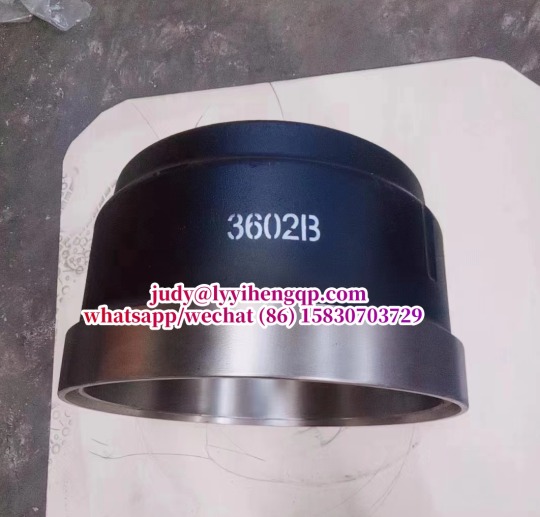
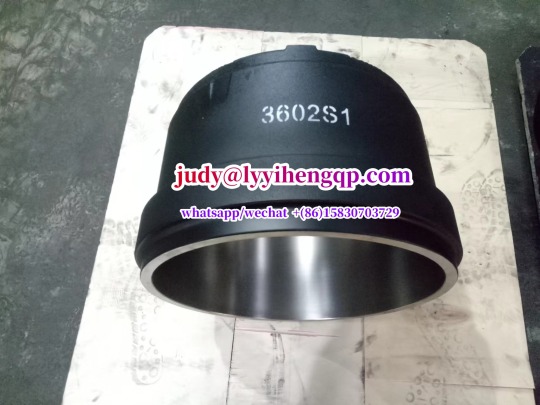
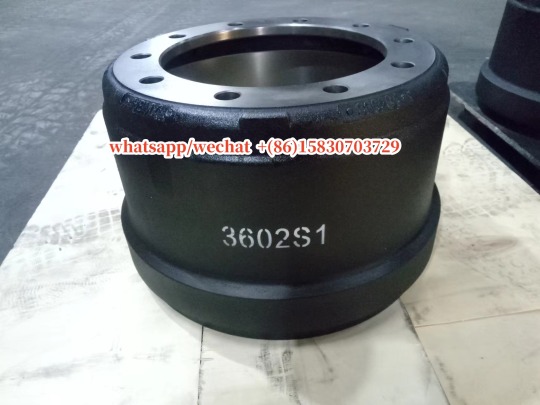
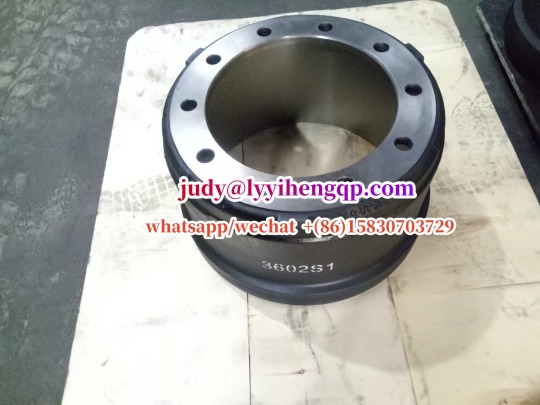
3602S1 3602S truck brake system parts for FUWA FORD truck trailer #brakedrum 3602. B 3602. E 3602.R1 #autoparts #brakeparts #truckpartsforsale ([email protected])
Origin:China Customized--Print/logo/Mold/Weight/Drawing Factory direct sales--Yes Shipping Port--Tianjin/Guangzhou/Qingdao Package:Pallet with plastic strap and carton board Material:Brake drums :HT250 Wheel hubs :QT250 Size:Original OEM size(ISO) Warrant:1 year/8000km Production :500pc/day
We are manufacturer of barke drums for Scania Renault DAF MAN BPW WEBB Benz Volvo Isuzu Toyota Hino Iveco Hyundai HOWO .etc We support high quality and best price to our customers . Mold also can be customized . If interesting ,plz feel free to contact me anytime.Look forward to our cooperation . Whatsapp/WeChat: +(86)15830703729 Mail: [email protected]
#3602S#brake parts#truck parts#auto parts#auto parts supplier#auto parts online#autopartsstore#oemparts#auto parts and accessories
0 notes
Text
Hydraulic Tools and Equipment: Powering Industries with Precision and Efficiency
Hydraulic tools and equipment are essential for various industrial applications that require high-force operations. These tools harness the power of pressurized fluid, typically oil, to perform tasks ranging from lifting heavy loads to tightening bolts. The hydraulic systems behind these tools allow for greater control, precision, and efficiency in operations that would otherwise be impossible with manual labor or electric-powered tools.
What Are Hydraulic Tools and Equipment?
Hydraulic tools and equipment utilize fluid power to create controlled movements and forces that enable tasks to be performed efficiently. Unlike mechanical tools that rely on direct human power or electrical energy, hydraulic tools work by pressurizing fluid (usually oil) within a sealed system to generate force.
Some of the most common hydraulic tools and equipment include:
Hydraulic Jacks: These tools are used to lift heavy loads, typically in the automotive, construction, and industrial sectors. Hydraulic jacks can lift vehicles, machinery, and structures with minimal effort, using hydraulic fluid pressure to raise or lower the load smoothly and safely.
Hydraulic Torque Wrenches: These tools are essential for applying precise amounts of torque to fasteners such as nuts and bolts. They are often used in industries where high-torque applications are needed, such as in the assembly of large machinery, bridges, and pipelines.
Hydraulic Presses: Hydraulic presses are used to apply a consistent, high-pressure force to materials for shaping, molding, or forming. These machines are widely used in manufacturing and automotive industries for tasks like metalworking, stamping, and shaping parts.
Hydraulic Pumps: Pumps are the heart of any hydraulic system, transferring hydraulic fluid from one part of the system to another. They convert mechanical energy into hydraulic energy, enabling the movement of the system’s various components.
Hydraulic Cylinders: These devices provide linear force by converting hydraulic energy into mechanical energy, which is essential for lifting, pushing, or pulling heavy loads. Hydraulic cylinders are used in everything from construction machinery to forklifts and agricultural equipment.
Hydraulic Hoses and Fittings: These parts connect various components of hydraulic systems, allowing fluid to flow through the system. Hydraulic hoses and fittings must be durable and resistant to the high pressures within the system to ensure safety and reliability.
Hydraulic Crimping Tools: These are used to connect hydraulic hoses to fittings, ensuring a secure and leak-proof connection. They are widely used in industries that rely on hydraulic systems to keep operations running smoothly.

Applications of Hydraulic Tools and Equipment
Hydraulic tools and equipment are indispensable in a wide variety of industries due to their ability to deliver high force in a compact and controlled manner. Some of the key industries that rely on hydraulic tools include:
Automotive Industry: Hydraulic tools like jacks, presses, and torque wrenches are used for repairing vehicles, assembling parts, and maintaining equipment.
Construction and Demolition: Hydraulic tools are used in heavy-duty machinery for lifting, digging, and breaking apart materials. Equipment such as hydraulic excavators, breakers, and loaders rely on hydraulic systems to perform tasks more efficiently.
Manufacturing: Hydraulic presses, pumps, and cylinders are essential for shaping, molding, and assembling parts in factories. They are used in processes such as metal forming, plastic molding, and sheet metal bending.
Aerospace and Aviation: Hydraulic systems are critical in aircraft design and maintenance. Hydraulic tools are used for tasks such as landing gear maintenance, flight control systems, and hydraulic brake systems.
Marine Industry: Hydraulic systems are widely used on ships and offshore rigs for various operations, from lifting heavy loads to controlling steering systems and winches.
Key Considerations When Choosing Hydraulic Tools and Equipment
When selecting hydraulic tools and equipment for your business, several important factors should be considered:
Pressure and Force Requirements: Hydraulic tools are designed for different pressure ratings. It’s essential to choose equipment that meets the required pressure specifications for your application to ensure safety and efficiency.
Durability: Given the harsh environments in which hydraulic tools often operate, choosing equipment that is durable and built to withstand heavy use is crucial. Look for tools made from high-quality materials, resistant to wear and corrosion.
Maintenance and Serviceability: Hydraulic tools require regular maintenance to ensure optimal performance. Choose tools from suppliers who offer reliable after-sales service, spare parts, and maintenance guidance.
Compatibility: Ensure that the hydraulic tools and equipment are compatible with other components in your system, such as hoses, fittings, and pumps. Proper compatibility ensures seamless operation and minimizes the risk of system failures.
Safety Features: Hydraulic systems can operate at extremely high pressures, so safety features such as pressure relief valves, secure fittings, and ergonomic handles are essential to minimize the risk of accidents.
Conclusion
Hydraulic tools and equipment are indispensable in many industries where high force and precision are required. They offer unmatched power and efficiency, making complex tasks easier and safer to perform. Whether you're in the automotive, construction, manufacturing, or marine industry, choosing the right hydraulic equipment is critical to maintaining operational efficiency and safety. By understanding the types of tools available, their applications, and the key considerations when selecting them, businesses can ensure that their hydraulic systems function at peak performance, helping them achieve success in their operations. For more details visit our website: www.simsinter.com
#Fire Fighting Equipment#Blasting & Painting Equipment#Special Trucks Equipment#Couplings Fire Hoses#Couplings Anti Corrosion#Power & Hand Tools Kits#Paint Spraying Equipment#Airless Electric Guns#Topcoats Equipment Near Me#Hydraulic Equipment Near Me#Coupling Equipment#Hydraulic Equipment Manufacturers#Hydraulic Tools And Equipment#Hydraulic Equipment Suppliers#Hydraulic Lifting Tools#Hydraulic Pump Manufacturers in Cameroon
0 notes
Text
Understanding Hydraulic Power Units: The Heart of Hydraulic Systems
Hydraulic power units (HPUs) are the central component of hydraulic systems, providing the energy needed to drive machinery and perform heavy-duty work. From industrial equipment to construction machines and even aviation systems, hydraulic power units play a critical role in powering devices that require high force and precision. But what exactly is a hydraulic power unit, how does it work, and why is it so widely used?
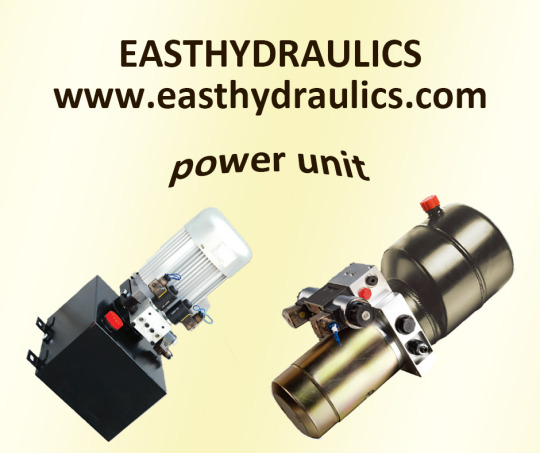
In this blog, we’ll explore the basics of hydraulic power units, their components, applications, and why they remain an indispensable part of modern engineering.
What is a Hydraulic Power Unit?
A hydraulic power unit (HPU) is a self-contained system that generates and delivers hydraulic power to various machines and devices. Unlike electrical or mechanical power, which relies on motors or engines, hydraulic power units use fluid to transmit energy. By pressurizing hydraulic fluid (usually oil), HPUs create enough force to move and control heavy machinery and tools with precision.
These units are typically composed of a reservoir to store the hydraulic fluid, a pump to move the fluid through the system, valves to control the flow, and a motor to drive the pump. Together, these components provide the necessary power to operate everything from small hydraulic tools to large industrial systems.
How Does a Hydraulic Power Unit Work?
Hydraulic power units operate based on Pascal's law, which states that pressure applied to a confined fluid is transmitted equally in all directions. When hydraulic fluid is pressurized, it can be directed to different components of a machine, allowing them to perform tasks like lifting, moving, or compressing.
Here’s a step-by-step breakdown of how a typical HPU functions:
Reservoir: The hydraulic fluid is stored in a tank or reservoir, which also helps cool the fluid as it cycles through the system.
Pump: The hydraulic pump draws the fluid from the reservoir and pressurizes it, creating the force needed to move mechanical parts.
Motor: An electric or gas-powered motor drives the pump, ensuring the continuous flow of hydraulic fluid under pressure.
Valves: These control the direction and flow rate of the hydraulic fluid, allowing the operator to adjust the speed and direction of the machinery.
Cylinders/Actuators: The pressurized fluid is directed into hydraulic cylinders or actuators, which convert the hydraulic energy into mechanical motion, powering the machinery.
Types of Hydraulic Power Units
Hydraulic power units come in different shapes and sizes, depending on the application. Here are the most common types:
Standard HPUs: These are the most common and are used in a wide variety of industrial applications, from powering lifts and presses to factory automation systems.
Mini HPUs: Compact and portable, these units are ideal for mobile equipment or smaller machinery that requires hydraulic power but doesn't need a large system.
Custom HPUs: Built to meet specific industrial requirements, custom hydraulic power units are often used in complex or unique applications like offshore drilling, aerospace, or large-scale manufacturing.
Applications of Hydraulic Power Units
Hydraulic power units are used across a range of industries due to their ability to generate significant force with precision. Here are some common applications:
Industrial Machinery: HPUs power heavy machinery like presses, conveyors, and injection molding machines used in manufacturing and processing plants.
Construction Equipment: Many construction machines, such as excavators, bulldozers, and cranes, rely on hydraulic systems for lifting and moving heavy loads.
Agriculture: Tractors, combines, and other farming equipment use hydraulic power to control implements, operate lifts, and handle complex farm tasks efficiently.
Aerospace: In aircraft, hydraulic power units control vital systems like landing gear, brakes, and flight control surfaces.
Marine: Hydraulic systems are used in boats and ships to operate winches, steering systems, and deck equipment.
Automotive Industry: In automotive manufacturing, hydraulic presses are essential for shaping metal parts, assembling components, and even in testing vehicles for durability.
Advantages of Hydraulic Power Units
Hydraulic power units are preferred in many industries due to several key advantages:
High Power Density: HPUs can generate a tremendous amount of force in a relatively small system, making them ideal for applications where space is limited but power needs are high.
Precision Control: Hydraulic systems allow for fine control over movement, speed, and force, making them perfect for tasks that require accuracy, such as in aerospace or manufacturing.
Durability: Hydraulic power units are robust and can withstand harsh environments, heavy loads, and continuous use, making them highly reliable in demanding industries like construction and marine.
Efficiency: Although hydraulic systems require energy to operate, they are efficient in converting that energy into mechanical work, especially for tasks that require steady, high force.
Maintenance of Hydraulic Power Units
Like any other mechanical system, hydraulic power units require regular maintenance to ensure optimal performance and prevent breakdowns. Here are a few key maintenance tasks:
Fluid Checks: The hydraulic fluid should be checked regularly for contamination, proper levels, and viscosity. Clean fluid is essential for preventing damage to the pump and valves.
Filter Replacement: The filters in an HPU must be changed regularly to keep debris and contaminants from entering the system.
Component Inspection: Regularly inspecting seals, hoses, and valves for leaks or wear can prevent larger issues and keep the unit running efficiently.
Temperature Monitoring: Overheating can damage hydraulic systems, so it's important to monitor the temperature of both the fluid and the system as a whole.
Conclusion: The Essential Role of Hydraulic Power Units
Hydraulic power units are an integral part of many industries, providing the muscle and precision needed to power machinery that lifts, moves, and shapes the world around us. With their high force output, durability, and versatility, HPUs remain one of the most efficient and effective ways to deliver mechanical power in industrial settings. Whether in a massive construction crane or a delicate aerospace system, hydraulic power units continue to be a vital force in engineering and innovation.
0 notes
Text
Enhancing Your Ride - The Ultimate Guide to Mustang Custom Wheels
When it comes to enhancing the look and performance of your Ford Mustang, few upgrades make as significant an impact as custom wheels. Whether you're a dedicated gearhead or just someone who loves the thrill of a powerful drive, investing in Mustang custom wheels can transform your vehicle into a unique, high-performance machine.
Why Choose Mustang Custom Wheels?
Mustang custom wheels offer both aesthetic and functional benefits. First and foremost, they provide a unique look that sets your car apart from the rest. With endless designs and finishes to choose from, you can personalize your Mustang to match your style. Whether you prefer a sleek, modern appearance or a bold, aggressive stance, there's a custom wheel design for you.
But it's not just about looks. Custom wheels can also enhance your Mustang's performance. By choosing the right set, you can improve your car's handling, acceleration, and braking. Performance wheels are often lighter than factory-installed options, reducing unsprung weight and allowing for better control and responsiveness. This can be especially noticeable in high-speed driving or when navigating tight corners.
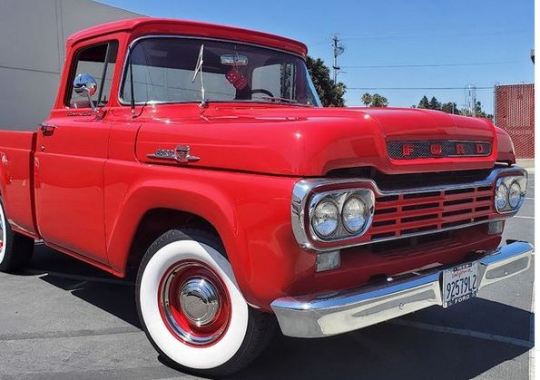
Types of Mustang Custom Wheels
There is a wide range of options available when it comes to Mustang custom wheels, each catering to different tastes and driving needs. Here are some popular types:
Forged Wheels: Known for their strength and lightweight construction, forged wheels are crafted from a single block of metal. This makes them highly durable and ideal for performance-focused Mustang owners.
Cast Wheels: These wheels are made by pouring molten aluminum into a mold. While they are generally heavier than forged wheels, they are more affordable and come in a variety of designs.
Multi-Piece Wheels: These are constructed from multiple components, typically including the rim and the center. Multi-piece wheels offer a high degree of customization, allowing for different materials and finishes to be used in a single wheel.
Flow Formed Wheels: A middle ground between cast and forged wheels, flow formed wheels are created by stretching and forming a cast wheel under high pressure. This process produces a lightweight, strong wheel that’s perfect for performance enthusiasts.
Choosing the Right Mustang Custom Wheels
Selecting the right Mustang custom wheels involves more than just picking a design you like. Here are some factors to consider:
Size: Make sure the wheels fit your Mustang's specifications. Larger wheels can provide better grip and a more aggressive look, but they might also affect ride comfort.
Offset: This refers to the distance from the wheel's mounting surface to the centerline of the wheel. The right offset ensures your wheels sit properly within the wheel wells.
Finish: From polished chrome to matte black, the finish of your custom wheels can dramatically alter the look of your Mustang. Choose a finish that complements your car’s color and style.
Performance Needs: If you're focused on performance, opt for lightweight wheels that can enhance handling and acceleration.

Mustang custom wheels are more than just an upgrade; they’re a statement. They tell the world that your Mustang is not just any car, but a reflection of your personal style and passion for performance. Whether you’re cruising down the highway or showcasing your ride at a car show, the right set of custom wheels can make all the difference. Explore the vast array of options available and take your Mustang to the next level with a set of custom wheels designed just for you.
By choosing Mustang custom wheels, you're not only enhancing your vehicle's appearance but also unlocking its full performance potential. So, why wait? Dive into the world of Mustang custom wheels and find the perfect match for your ride today!
0 notes
Text
What does the small bus brake pad mold installed on the mold base look like? (1) This is the bus brake pad hot pressing mold (2) Install on the mold base (3) Small molds are easy to replace (4) Use high-quality mold steel to ensure long life of the mold (5) There are other brake pad molds brake shoe mold 7 parking,brake lining mold nz,brake mold Factory,rolling stock brake pad mould hole,brake shoe mold 700,Cheap brake molds Manufacturer,China brake pad Mould Factory,brake shoe mold bad for you,railway brake mould black sheets of rain,rolling stock brake pad mould design,brake lining mold price,friction material mold glove,friction material mold levels,brake lining mold wear truck daf,railway brake mould 400,brake shoe mold activa price,rolling stock brake pad mould black,brake lining mold armor,brake mold mitigation JINAN HAIGUANG MOLD CO.,LTD https://brake-mold.cn WeChat/WhatsApp:+86 13953117306
0 notes
Text
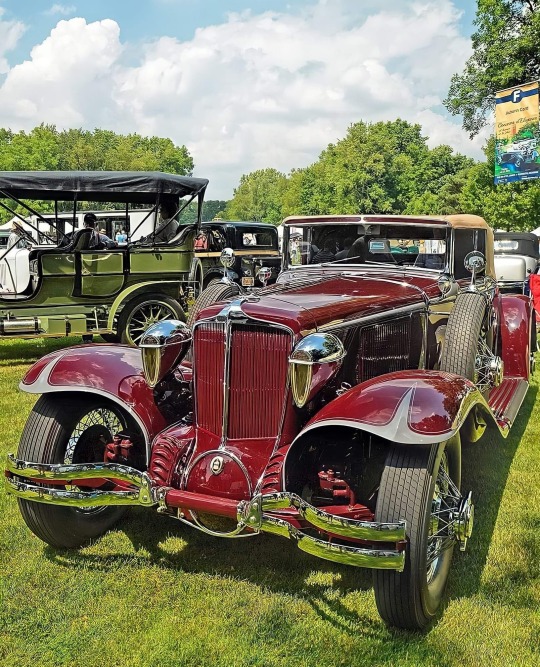
Arguably the finest 1931Cord L-29 Convertible in the world!
The Cord L-29 was one of those gentle leaders. The first major American car to offer front-wheel drive to the public, it came at a time of conservatism in automotive engineering, further deadened by the crushing weight of the Great Depression. Nonetheless, its engineering proved a starting point for those who followed, and who, inspired by it, worked until front-wheel drive was the mass success that it is today. If success is measured not in years of production or volume produced, but, like leadership, in the amount of influence it had on those who followed, the L-29 was the first successful American front-drive production car.
The Cord Front Drive (as the factory always called it) was the namesake of E.L. Cord, who was scarcely 35 when the first examples began rolling out of his Auburn Automobile Company in Auburn, Indiana. Its development was credited to the talented engineer Cornelius Van Ranst, working using some of Indianapolis legend Harry Miller's front-drive patents, and Auburn Chief Engineer Herbert Snow.
Essentially and simplistically, the idea was to take a rear-wheel drive car and turn everything around. It began with the chassis, which featured an innovative central X-brace to provide extra rigidity and rode on newly designed suspension, designed by Van Ranst and based on de Dion ideas. Brakes were moved inboard, as on the Miller Indy cars. On this rather sophisticated chassis rode a Lycoming straight eight, another fine Cord Corporation product, and it displaced 298 cubic inches and produced 125 horsepower. The engine was reversed so that the crankshaft exited the block at the front of the car and met a three-speed transmission that sat between the front wheels. The relocation of the transmission to the front of the car required an ingeniously long shift lever that extended from the L-29's dashboard down the length of the engine compartment and ended at the gearbox.
All this was wrapped in Alan Leamy's beautiful coachwork, which was outstanding for its refreshingly simple beauty. The Cord's innovative chassis engineering allowed it to stand only five feet tall. Leamy emphasized the lowness with clean, classic lines; long, flowing fenders; a simple radiator shell, painted to blend into the body; and wide beltline moldings that encouraged the use of factory-suggested two-tone color schemes. The interior boasted wide, comfortable seats, facing a fully instrumented dashboard with the distinctive dogleg shifter handle.
The Cord was mechanically genius and stylistically gorgeous. In the Great Depression, genius and beauty oft went unnoticed in favor of more practical matters. Production of the L-29 began in Auburn in late-1929 and wound up in late-1931 with a token run of 1932 models. Only about 5,000 had been made.
This cabriolet is one of the survivors. Certified and authenticated by the Auburn #Cord Duesenberg Club as being an original L-29 #Cabriolet, its history includes long-term California ownership by enthusiasts Ernie Mendicki, Bob Morehouse, and William "Chip" Connor. Connor, a noted collector whose cars have won Best of Show at the Pebble Beach Concours d'Elegance, acquired this car in 1983, and following its restoration, it was an award-winner in the special L-29 class at Pebble Beach in 1987. ( Sold for $407,000 )
https://www.facebook.com/545726305927325/posts/692415664591721/
0 notes
Text
AUTOTECKNIC DRY CARBON COMPETITION BRAKE AIR DUCTS - F80 M3 | F82/ F83 M4

Check out AutoTecknic's newly developed dry carbon fiber competition brake air ducts for the F80 M3, F82, and F83 M4. Like the brake air ducts found on the factory GT4 race car, it's designed to mount directly onto the front bumper on the F80 M3, F82, and F83 M4. Dry carbon fiber's name comes from its manufacturing process. Dry carbon fiber is formed by using a "pre-preg" or impregnated piece of carbon materials. This piece of carbon is first placed into a mold and then into a sealed autoclave to properly cure. This method creates the least amount of waste and forms a lighter carbon version than the “wet” method. The autoclave vacuuming process of making dry carbon means fewer pinholes and virtually no air pockets in the carbon. Dry carbon is the highest-quality version of carbon fiber products that are produced.
1 note
·
View note
Text
The trike idea requires some work but what our son says is you pull the body off and you and you pull the interior out and you leave the linkage and you'd have to put a new controls and gauges but you leave the it's not wiring really it's just a few wires the wiring harness would be removed and the motor seals would be replaced it usually it's just the top end and the pan and the main seal and a couple others and you can access it all and the seals and the suspension and Axle and then and differential and it's all open and you can put it on production line and you rehab the the chassis it's really a rolling chassis that your rehab by taking the body off and the guy got the idea the body's ruined because of mold and everything inside is disgusting and the wiring is no good you don't need the wiring and you put a new fuse panel and you do the seals you can actually test it and you have to anyways to see if it's ruined inside and then he says you're right and it's like really there's the valve covers the top seal the the fuel and then the pan and the main seal differential there's only a few and those can be made in seconds and he said we're going to go ahead and do it that's awesome and then what do you do you put on any body style you want on Earth and a lot of people are wondering what you would put on there and he says I don't know what I say is a Saab an Audi a Mercedes because it's like a four-door or you going to the sports cars but they're not as useful and you want to probably start with a sports car and what better car than a Bradley GT2 of course it's modernized and it's known as the fastest car on earth because of the aerodynamics and so he's trying to put one together and you just modernized you know the look of it is old and the way it works kind of old and pretty good with scissor doors in this kits are everywhere so he's going to go ahead and do it and he said there's a way to do the inside and outside if you can so he knows how to do it and he's going to go ahead and do it and he says it doesn't take long so we did a test run and we're making a sports car and it's famous and it's a Ferrari and we ran a whole line and we rehabbed the Geo and that's the car it's a small Ferrari and the car rehab takes 1/3 of time to make a car chassis and no materials and we tested all out you pressurized test it and you look in the cylinders and if you see corrosion you have to check the whole thing and really it's like one out of 10 is no good and then we move it along and you pull the body off and send it somewhere else they salvage some stuff and most of it you don't use and you put the new body kit on and the new interior we make one car on that one line every hour so it's fairly slow but when you get to the end of the line a car comes out like every 30 seconds and we can speed it up and to make it 20 seconds and that's pretty fast usually at a car plant it's every 15 seconds but at this point you want to employ people so we're going to go ahead with this idea
Thor Freya
Once you have all the seals and all the parts for the cars you're working on it takes no time at all to change the seals out and you check the motors and everything out before you ship them to the factory once it gets there people strip it of the cab in the factory and the whole thing goes off somewhere else that takes 5 minutes of car and teams do it and you should see it looks like yes just devouring something then they start rehabbing and they just change it all and then they put the new components on it and linkages and connections some of the interior the dashboard and so forth and everything you need to attach it's the frame then the fiberglass goes on and it's painted it looks really awesome they're putting a brake components and everything while you're doing it and then the interior is finished and the motor is adjusted now they're putting things on it and the exhaust and brakes the final pads and then they put the tires and rims and they're usually new and sometimes they have the right size and we check them and then it's out the door it's a brand new Ferrari usually it's 150 horsepower with the Geo and it goes pretty good we got it up to about 400 mph so what he said was just keep start making them and see what it does as a test run so we're making them it's a smaller Ferrari but it looks 100% like a Ferrari it's very low profile
Hera
We're going to go ahead and do this now we're doing it on one line as a test and it works great we are amazed at the performance we're going to go ahead and start getting other stuff ready especially for here and we need to right now
Savage Oppress
You started charging it at 3:30 so it's only been less than an hour and people are bothering him about it constantly that's why the 15 minute charge is necessary
Thor Freya
Olympus
0 notes
Text

More Information About Moulds For Automotive Structural Parts
moulds for automotive structural parts are tools used to manufacture automotive parts. They can be used to produce a variety of automotive components, including but not limited to:
1. Doors, hoods, trunk lids, roofs, front and rear bumpers and other body parts.
2. Chassis components, such as wheels, brakes, suspension and steering systems, etc.
3. Seats, steering wheels, instrument panels, door trims and other interior parts.
4. Engine components, such as cylinder block, cylinder head, crankshaft and connecting rod, etc.
These molds are usually made of metals such as steel or aluminum, have a specific shape and size, and can be processed by injection molding, die casting, stamping, etc. to produce automotive parts.
0 notes
Text


3600A/3600AX Brake Drum for Semi-Trailer & Truck Axle America
Origin:China Customized--Print/logo/Mold/Weight/Drawing Factory direct sales--Yes Shipping Port--Tianjin/Guangzhou/Qingdao Package:Pallet with plastic strap and carton board Material:Brake drums :HT250 Wheel hubs :QT250 Size:Original OEM size(ISO) Warrant:1 year/8000km Production :500pc/day
We are manufacturer of barke drums for Scania Renault DAF MAN BPW WEBB Benz Volvo Isuzu Toyota Hino Iveco Hyundai HOWO .etc We support high quality and best price to our customers . Mold also can be customized . If interesting ,plz feel free to contact me anytime.Look forward to our cooperation . Whatsapp/WeChat: +(86)15830703729 Mail: [email protected]
1 note
·
View note